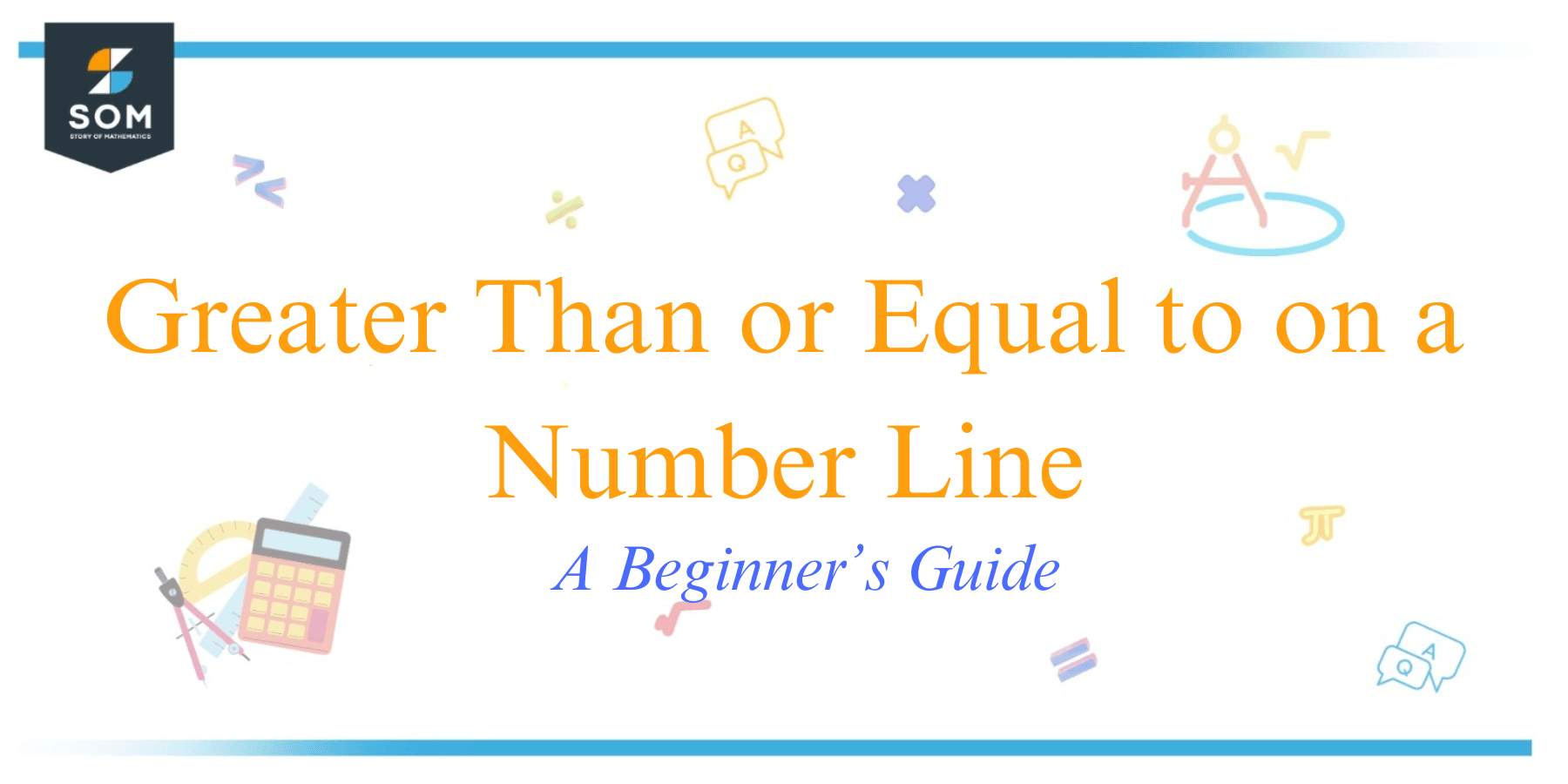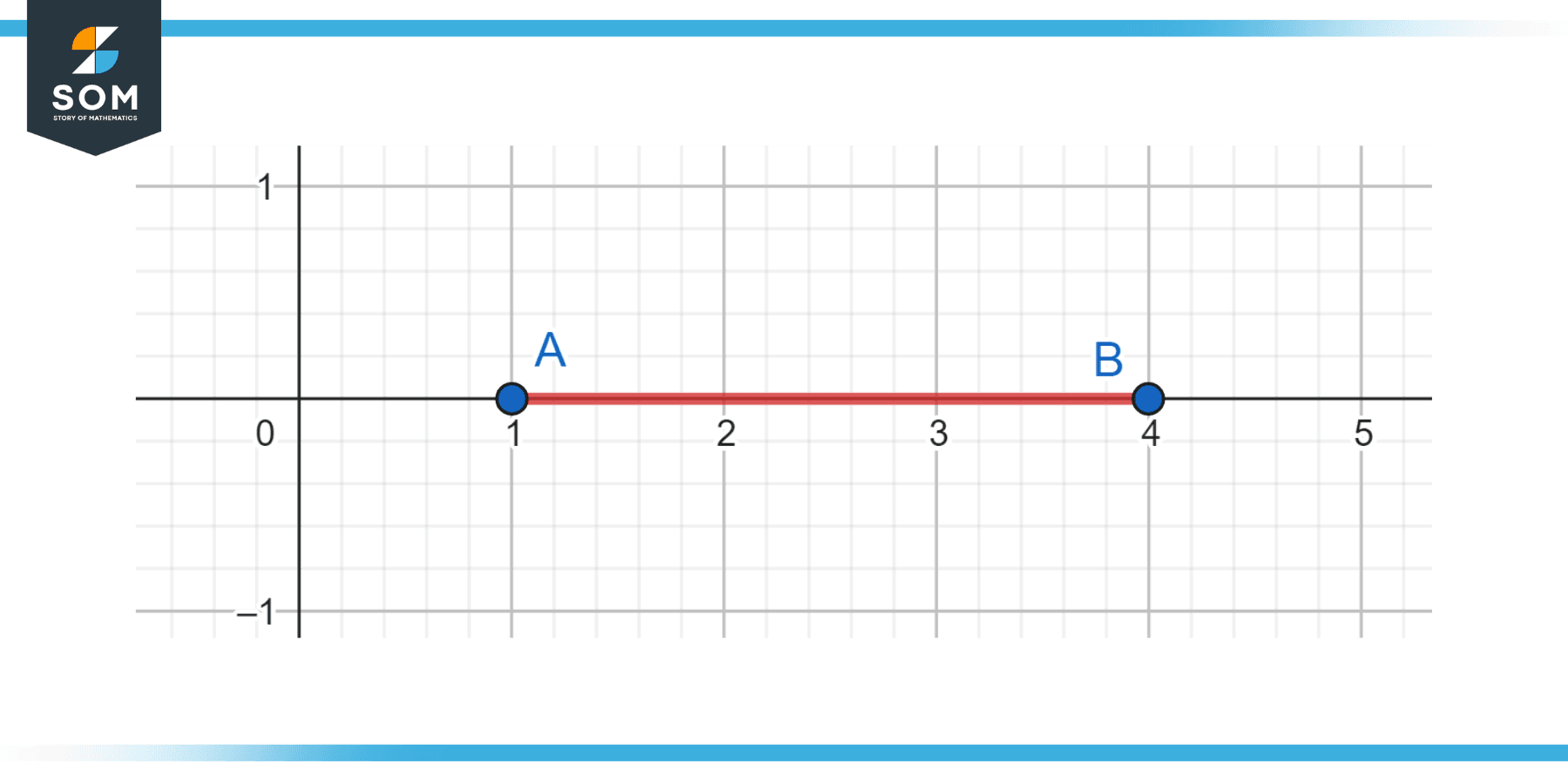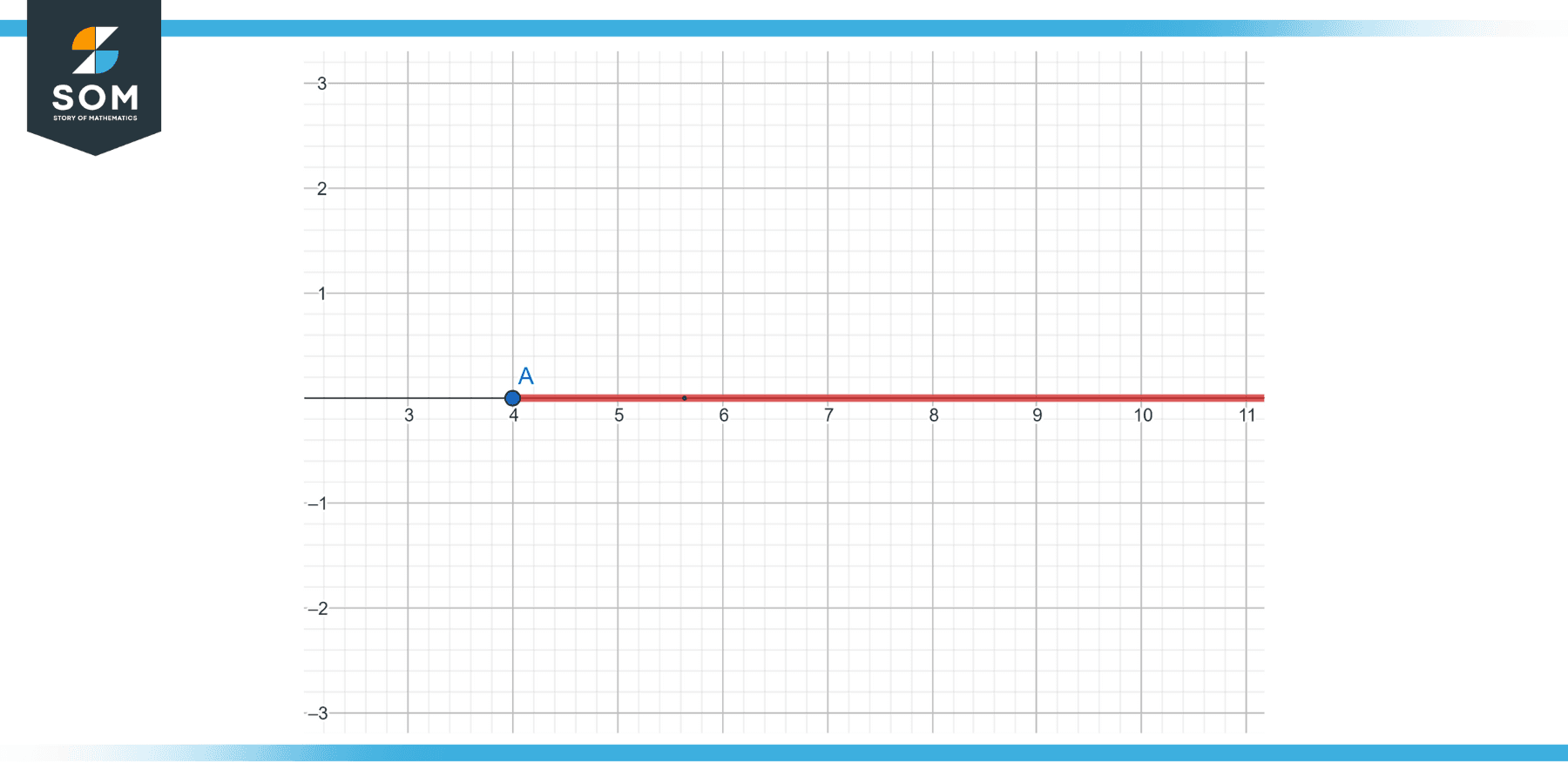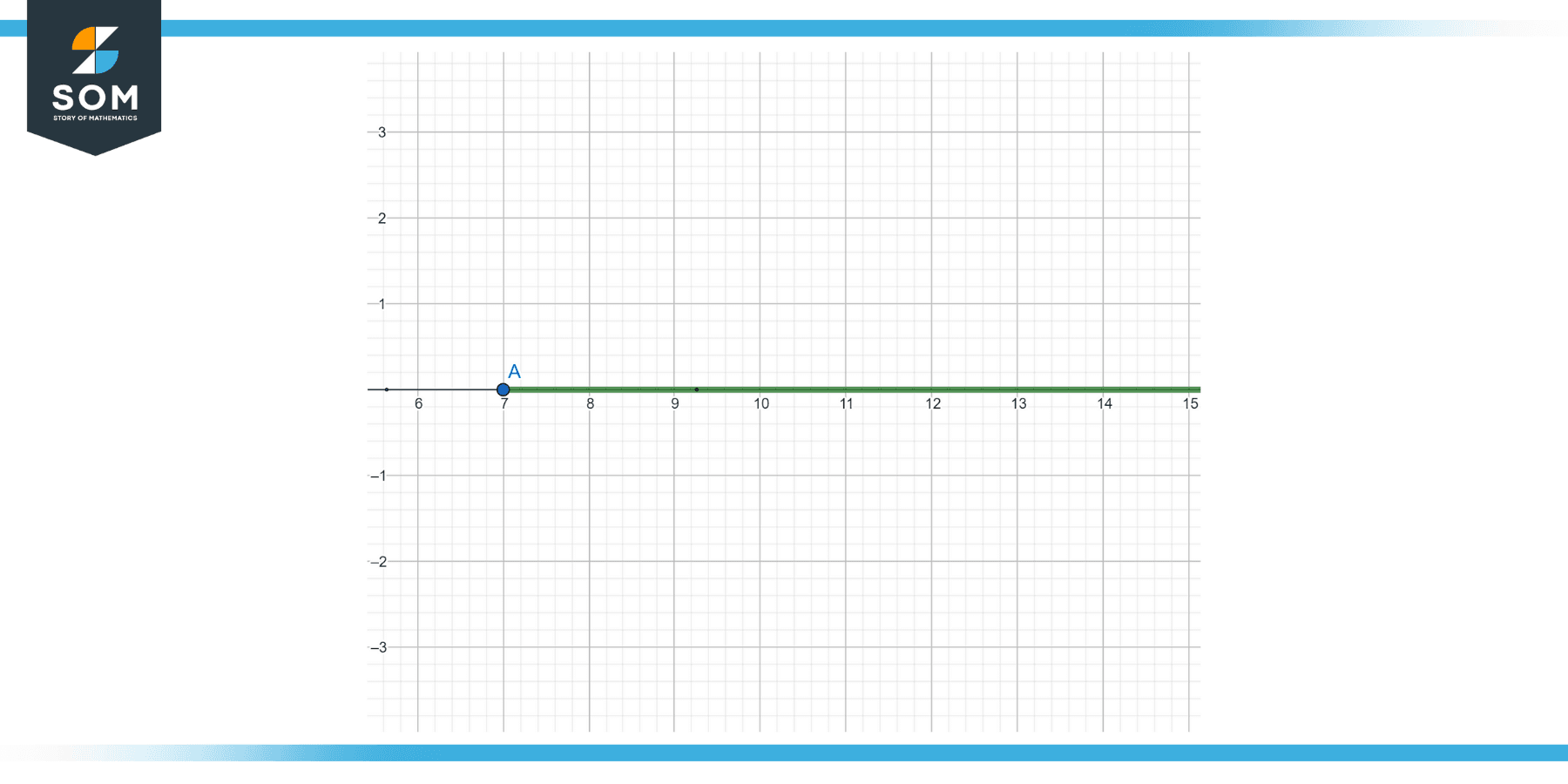JUMP TO TOPIC

In the vast landscape of mathematical symbols, the “greater than or equal to” sign (≥) stands as a powerful tool to denote inclusivity and range. When transposed onto a number line, this seemingly simple concept takes on a visual dimension, making abstract comparisons tangible and easy to comprehend.
In this article, we will embark on a journey through the realm of ≥, exploring its nuances and significance as it manifests on the number line.
Defining Greater Than or Equal to on a Number Line
On a number line, the symbol “greater than or equal to” (denoted as ≥) signifies that a number, located at a particular point, is either greater than another specific number or exactly equal to it.
In visual terms, when a value a is “greater than or equal to” a value b, the point representing a lies to the right of or coincides with the point for b. Often, this relationship is indicated with a closed circle at the point representing b and a line or arrow extending to the right, showing that all numbers in that direction, including b, satisfy the condition a≥b. This visual representation aids in quickly grasping the relative positions and values of numbers in relation to one another.
Example
Solve the compound inequality: 2 ≤ x+1 ≤ 5
Solution
Subtract 1 from all parts: 1 ≤ x ≤ 4
On a number line, this is represented by a closed dot at 1, a closed dot at 4, and a solid line connecting them, indicating all numbers in the inclusive range [1, 4].

Figure-1.
Properties
The “greater than or equal to” symbol, represented as ≥, is a partial order relation on the real numbers. When visualized on a number line, this relation and its properties become evident. Let’s delve into these properties in the context of the number line:
Reflexivity:
- Every number is greater than or equal to itself. Mathematically, for any number a, a≥a. On a number line, this can be visualized as a point lying on itself.
Antisymmetry:
- If a is greater than or equal to b and b is greater than or equal to a, then a must be equal to b. Mathematically, if a ≥ b and b ≥ a, then a = b. This means that on a number line, the points representing a and b coincide.
Transitivity:
- If a is greater than or equal to b, and b is greater than or equal to c, then a is also greater than or equal to c. Mathematically, if a ≥ b and b ≥ c, then a ≥ c. On a number line, if a lies to the right of b and b lies to the right of c, then a will also lie to the right of c.
Addition and Subtraction Property:
- If a ≥ b, then a+c ≥ b+c and a−c ≥ b−c for any real number c. When you add or subtract a constant value to both numbers, their relative positions on the number line with respect to “greater than or equal to” don’t change.
Multiplication Property:
- If a ≥ b and c > 0, then ac ≥ bc. If you multiply both sides of an inequality by a positive number, the inequality direction remains unchanged.
- However, if a ≥ b and c < 0, then ac ≤ bc. If you multiply both sides of an inequality by a negative number, the direction of the inequality flips. On a number line, this means the order of a and b will switch with respect to the origin when multiplied by a negative value.
Density Property:
- For any two distinct real numbers a and b where a < b, there exists another real number c such that a < c < b. This means that between any two points on the number line, there are infinitely many other points.
Exercise
Example 1
Solve the inequality: x + 3 ≥ 7
Solution
Subtract 3 from both sides: x ≥ 4
On a number line, this would be represented with a closed dot at 4 and a line or arrow extending to the right (indicating all numbers greater than or equal to 4).

Figure-2.
Example 2
Solve the inequality: 2x – 5 ≥ 9
Solution
Add 5 to both sides: 2x ≥ 14
Divide by 2: x ≥ 7
On a number line, a closed dot at 7 with a line or arrow extending to the right.

Figure-3.
Example 3
Solve the inequality: -3x + 2 ≥ 11
Solution
Subtract 2 from both sides: -3x ≥ 9
Divide by -3 (Remember to reverse the inequality when dividing by a negative number): x ≤ -3
On a number line, a closed dot at -3 with a line or arrow extending to the left.
Applications
The “greater than or equal to” (≥) relation, especially when visualized on a number line, serves various functions across multiple fields. Here’s how this relation is applied across different disciplines:
Mathematics
- Algebra: Inequalities are commonly used to solve problems involving limits, such as determining the range of possible values of a variable.
- Calculus: In optimization problems, inequalities help determine the maximum or minimum values of functions within a given domain.
Economics and Finance
- Budgeting: If a company’s earnings are greater than or equal to its expenditures, it is profitable or breaking even.
- Stock Analysis: Investors might use inequalities to set benchmark performances. For example, they might look for stocks with returns ≥ 8%.
- Linear Programming: This mathematical modeling technique uses inequalities to determine the best outcome (such as maximum profit or minimum cost) in a given mathematical model.
Computer Science
- Algorithms: Many algorithms, especially sorting and searching ones, use the ≥ relation for making decisions.
- Database Queries: When filtering or searching through large datasets, queries often involve ≥ conditions to retrieve relevant records.
Physical Sciences
- Physics: Inequalities might be used to set bounds on measurements, like ensuring a particle’s speed is less than or equal to the speed of light.
- Chemistry: In equilibrium reactions, chemists might look for conditions where the concentration of one substance is greater than or equal to another.
Engineering
- Safety Standards: Structures are often designed to withstand loads greater than or equal to the maximum expected load to ensure safety.
- Signal Processing: Filters might be designed to allow frequencies greater than or equal to a certain threshold to pass through.
Medicine and Biology
- Epidemiology: Researchers might track if the number of cases of a disease is greater than or equal to a threshold that requires intervention.
- Pharmacology: Dosages might be recommended if a patient’s weight is greater than or equal to a certain number.
All images were created with GeoGebra.
